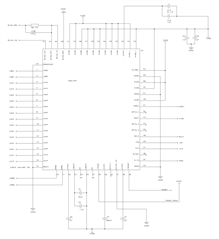Hi TI Team and fellows,
I have a few EEG test boards using closed loop RLD for CMR improvement. This board is used to measure EEG on a subject using referential mode with SRB1 on. All negative electrodes and SRB2 have no connection. In the firmware enabling BIAS_SENSN causes all signals to become railed due to failure of RLD loop.
My question is that:
Is the BIAS_SENS signal generated from PGAP and PGAN, as it seems from the datasheet or is it generated from the INxP and INxN? If it is generated from PGAP and PGAN then the RLD loop should not fail as PGAN is not floating. Can you guys reproduce this error?
Looking forward to the response.



